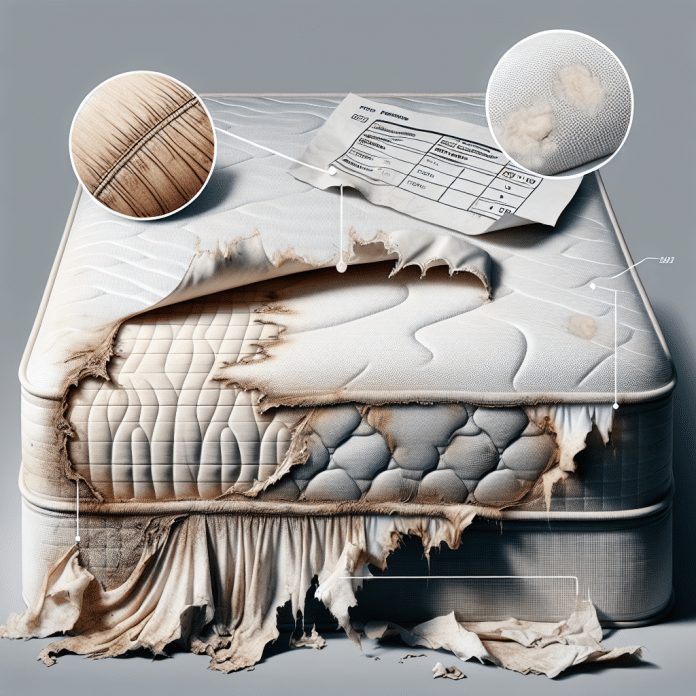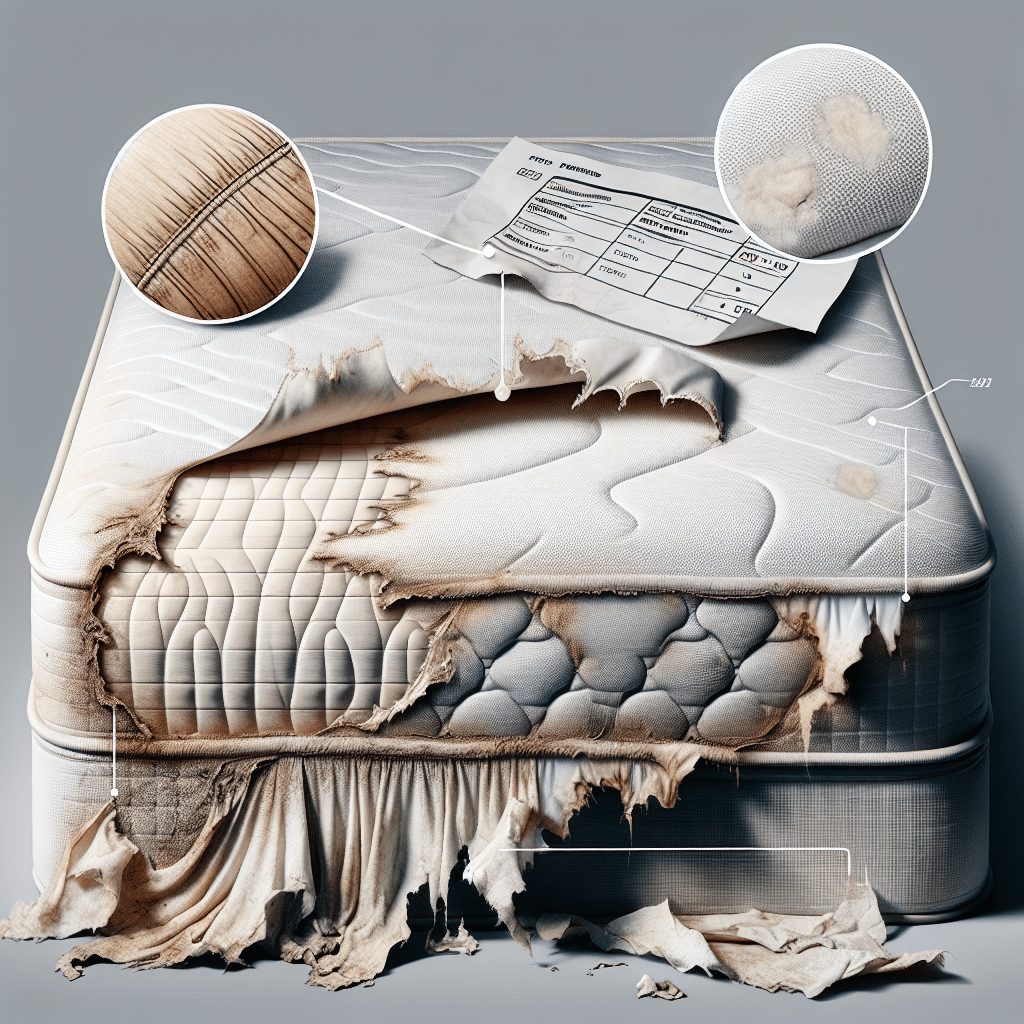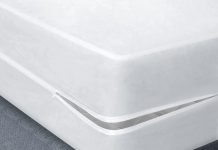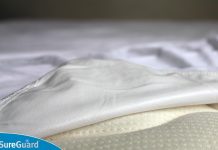We all know the importance of a good mattress for a good night’s sleep, but what about its protector? A mattress protector may not be the star of the show, but it plays a vital role in keeping our mattresses clean and protected. However, like all things, it has a shelf life too. In this article, we will explore the signs that indicate it’s time to bid farewell to your trusty mattress protector and invest in a new one. So, let’s take a closer look at when it’s time to say goodbye to your faithful sleep companion.
Review contents
What Are The Signs It’s Time To Replace A Mattress Protector?
A mattress protector is a crucial investment to safeguard our mattresses from spills, stains, allergens, and general wear and tear. However, like any other item, a mattress protector does not last forever. Over time, it can become less effective in providing adequate protection. To ensure a good night’s sleep and maintain the hygiene of our mattress, it is important to be aware of the signs indicating that it’s time to replace a mattress protector. In this article, we will discuss the various signs to look out for, so you can assess the condition of your mattress protector and make an informed decision about replacing it.
Visible Stains
One of the most obvious signs that it’s time to replace a mattress protector is the presence of visible stains. Despite our best efforts to keep our mattress protectors clean, spills and accidents do happen. Whether it’s a spilled beverage, sweat stains, or pet accidents, these stains can accumulate over time and become unsightly. In addition to being unappealing, these stains can also release unpleasant odors and affect the overall feel of the mattress. If your mattress protector has visible stains that are difficult to remove, it’s a clear indication that it’s time for a replacement.
Odor
Another sign that it’s time to replace a mattress protector is the presence of lingering odors. Over time, sweat, body oils, and other substances can seep through the protector and settle into the mattress. These substances can create an unpleasant smell that lingers even after thorough cleaning. If you notice a persistent odor coming from your mattress protector, it’s likely that it has reached the end of its lifespan. A new mattress protector will not only provide better protection but also help in maintaining a fresh and clean sleeping environment.
Allergies
If you or your sleeping partner have been experiencing unexplained allergies or worsening allergic symptoms, it might be worth considering the condition of your mattress protector. Over time, dust mites and allergens can accumulate in the protector, despite regular washing. These allergens can trigger respiratory issues, such as asthma or allergies, and lead to discomfort during sleep. If you notice that your allergies or respiratory symptoms have worsened, it may be a good idea to replace your mattress protector and invest in a hypoallergenic option.
Damage
Physical damage to a mattress protector is an obvious sign that it needs to be replaced. Rips, tears, or holes in the fabric can compromise its ability to protect the mattress effectively. These damages may have occurred due to regular wear and tear, accidents, or even pet claws. Once the integrity of the mattress protector is compromised, it becomes less effective in preventing spills, stains, and allergens from reaching the mattress. Therefore, if you notice any visible damage to your mattress protector, it’s time to invest in a new one to maintain the longevity of your mattress.
Wear and Tear
Even if there is no visible damage, wear and tear can gradually affect the performance of a mattress protector. With regular use, the fabric may start to thin out, lose its elasticity, or develop weak spots. Over time, this can compromise the protector’s ability to stay securely in place and provide adequate coverage. To ensure optimal protection for your mattress, it’s important to regularly evaluate the condition of your mattress protector for signs of wear and tear. If you notice any significant deterioration, it’s a clear indication that it’s time for a replacement.
Decreased Comfort
Mattress protectors are not only meant to protect the mattress but also to enhance comfort during sleep. However, as they age, they may start to affect the overall comfort level of the mattress. An old or worn-out mattress protector may create lumps, sagging, or unevenness, which can be uncomfortable to sleep on. If you find yourself tossing and turning or waking up with discomfort, it’s worth considering whether your mattress protector is the culprit. Investing in a new, high-quality protector can help restore the comfort of your mattress and improve the quality of your sleep.
Increased Allergens
While a mattress protector is designed to minimize allergens and keep them from settling into the mattress, an old or damaged protector may do the opposite. As mentioned earlier, allergens can accumulate in the protector despite regular cleaning. If you notice an increase in allergy symptoms, such as sneezing, itchy eyes, or congestion, it could be a sign that your mattress protector is no longer effectively preventing allergens from reaching your mattress. In this case, it’s advisable to replace the protector with one that provides better protection against allergens.
Mold or Mildew Growth
Moisture trapped in a mattress protector can create a breeding ground for mold and mildew. If your mattress protector has been exposed to any moisture, such as spills, leaks, or excessive sweating, it’s important to inspect it regularly for signs of mold or mildew growth. These growths can not only be visually unappealing but also pose a health risk. Mold and mildew can release spores that can trigger allergies or respiratory issues. If you notice any signs of mold or mildew on your mattress protector, it’s crucial to replace it promptly to maintain a healthy sleeping environment.
Ineffectiveness in Protecting Mattress
The primary purpose of a mattress protector is to safeguard the mattress from spills, stains, allergens, and other potential damage. If your mattress protector is no longer performing its intended function effectively, it’s a clear indication that it’s time for a replacement. This ineffectiveness can manifest in various ways, such as the protector failing to repel liquids, allowing stains to seep through, or not providing a barrier against allergens. If you find that your mattress protector is not fulfilling its protective role, it’s best to invest in a new one to ensure the longevity of your mattress.
Expiration Date
Finally, some mattress protectors may come with an expiration date provided by the manufacturer. This expiration date serves as a guideline for the lifespan of the protector, taking into account factors such as wear and tear, material breakdown, and effectiveness. If your mattress protector has reached its expiration date, it’s a strong indication that it should be replaced. Continuing to use an expired protector may result in reduced protection and compromised hygiene. Be sure to check the label or packaging for any expiration date information provided by the manufacturer.
In conclusion, a mattress protector plays a crucial role in maintaining the cleanliness, hygiene, and longevity of your mattress. However, like any other product, it is subject to wear and tear and has a limited lifespan. By being aware of the signs that indicate it’s time to replace a mattress protector, you can ensure that you continue to enjoy a comfortable and protected sleeping environment. From visible stains and odors to allergens and decreased effectiveness, paying attention to these signs will help you make an informed decision about replacing your mattress protector. Remember, investing in a high-quality replacement will not only protect your mattress but also contribute to a better night’s sleep and overall well-being.
































